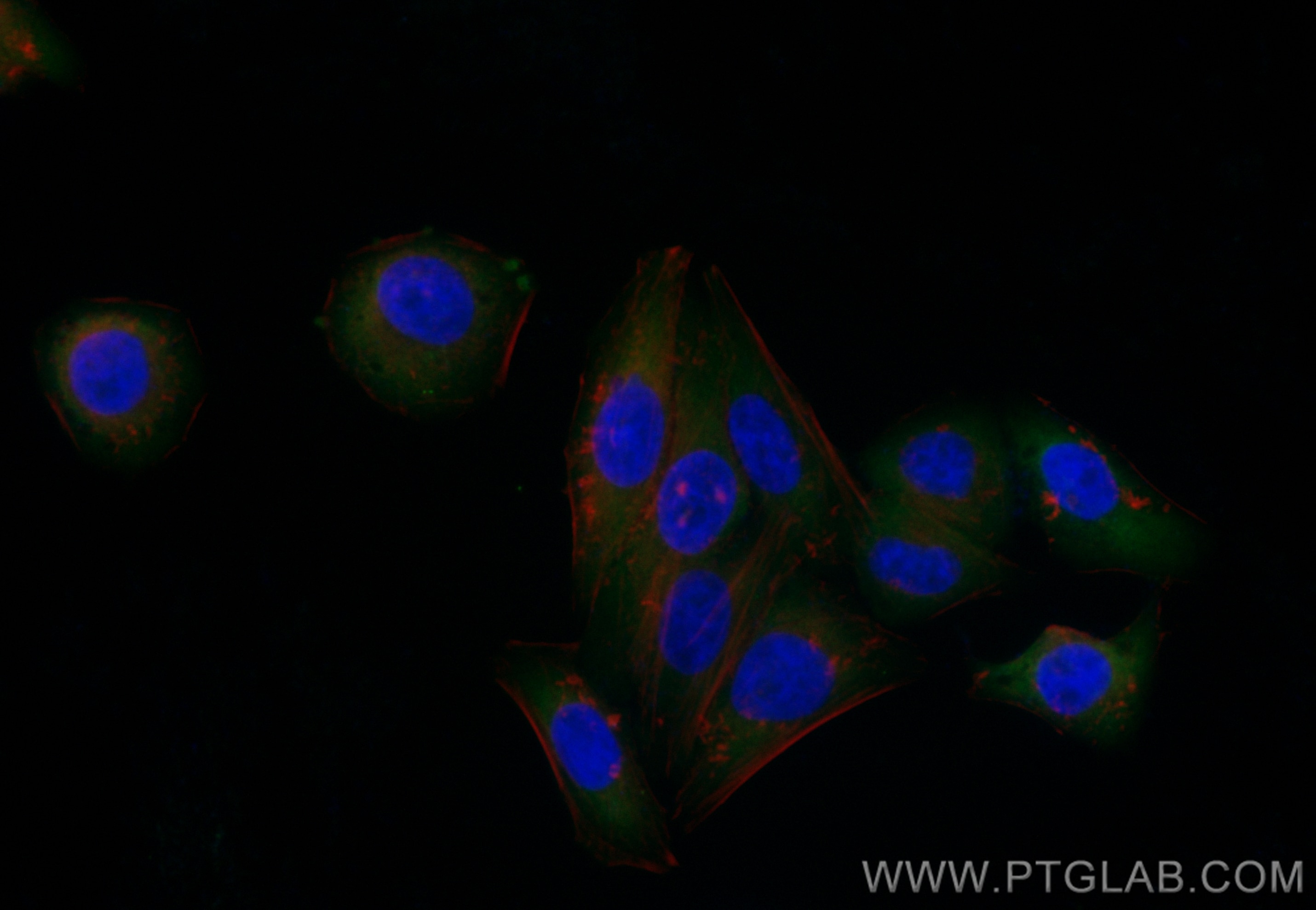- Featured Product
- KD/KO Validated
CoraLite® Plus 488-conjugated UPF1 Polyclonal antibody
UPF1 Polyclonal Antibody for IF/ICC
Host / Isotype
Rabbit / IgG
Reactivity
human
Applications
IF/ICC
Conjugate
CoraLite® Plus 488 Fluorescent Dye
Cat no : CL488-23379
Synonyms
Validation Data Gallery
Tested Applications
| Positive IF/ICC detected in | HepG2 cells |
Recommended dilution
| Application | Dilution |
|---|---|
| Immunofluorescence (IF)/ICC | IF/ICC : 1:50-1:500 |
| It is recommended that this reagent should be titrated in each testing system to obtain optimal results. | |
| Sample-dependent, Check data in validation data gallery. | |
Product Information
CL488-23379 targets UPF1 in IF/ICC applications and shows reactivity with human samples.
| Tested Reactivity | human |
| Host / Isotype | Rabbit / IgG |
| Class | Polyclonal |
| Type | Antibody |
| Immunogen | UPF1 fusion protein Ag16195 相同性解析による交差性が予測される生物種 |
| Full Name | UPF1 regulator of nonsense transcripts homolog (yeast) |
| Calculated molecular weight | 123 kDa |
| Observed molecular weight | 123-130 kDa |
| GenBank accession number | BC039817 |
| Gene symbol | UPF1 |
| Gene ID (NCBI) | 5976 |
| Conjugate | CoraLite® Plus 488 Fluorescent Dye |
| Excitation/Emission maxima wavelengths | 493 nm / 522 nm |
| Form | Liquid |
| Purification Method | Antigen affinity purification |
| Storage Buffer | PBS with 50% Glycerol, 0.05% Proclin300, 0.5% BSA, pH 7.3. |
| Storage Conditions | Store at -20°C. Avoid exposure to light. Stable for one year after shipment. Aliquoting is unnecessary for -20oC storage. |
Background Information
Up-Frameshift Suppressor 1 Homolog (UPF1) is the central factor in nonsense-mediated mRNA decay (NMD) and is also directly involved in telomere homeostasis, DNA replication, histone mRNA degradation and staufen-mediated mRNA decay (PMID: 29382845). It is a potential modulator of MALAT1 and that UPF1/MALAT1 pathway could be a therapeutic target for gastric cancer (PMID: 28942451). The molecular mass of UPF1 is 123-130 kDa.
Protocols
| Product Specific Protocols | |
|---|---|
| IF protocol for CL Plus 488 UPF1 antibody CL488-23379 | Download protocol |
| Standard Protocols | |
|---|---|
| Click here to view our Standard Protocols |


